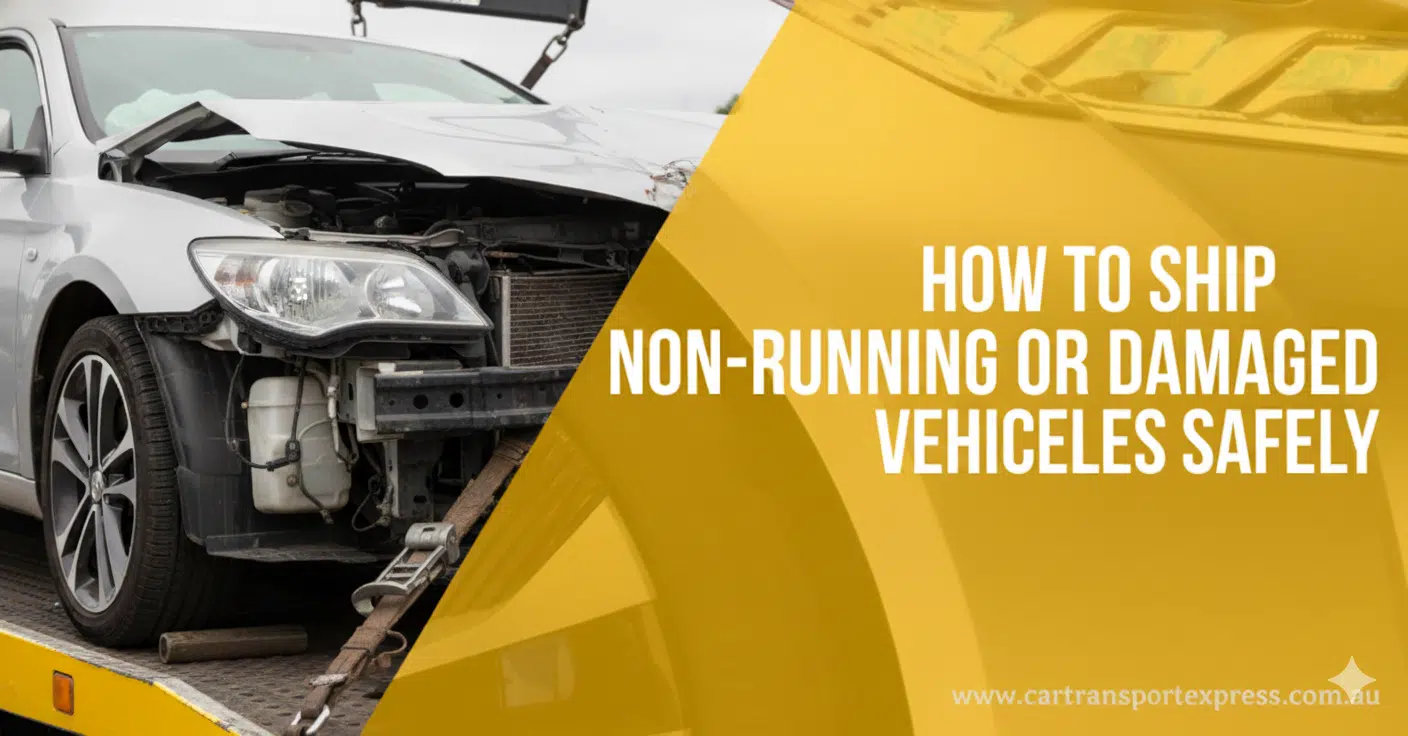How to Ship Non-Running or Damaged Vehicles Safely

4 min read
Key Takeaways
- Non-running or damaged vehicles need specialised equipment and experienced transporters.
- Always disclose the car’s exact condition to avoid safety issues or delays.
- Prepare the vehicle by removing personal items, securing loose parts, and ensuring accessibility.
- Professional carriers use tilt trays, winches, and proper tie-down methods to load safely.
- Accurate communication and planning prevent extra costs and damage during transport.
Moving a car that doesn’t start, has accident damage, or can’t be driven requires a different approach than standard vehicle transport. Non-running or damaged cars need special handling, equipment, and planning to ensure they’re moved safely without causing further harm. Whether you’re relocating, selling a project car, or moving a vehicle after an insurance claim, understanding how to properly ship a non-runner can save time, stress, and unnecessary costs.
1. What Counts as a Non-Running Vehicle?
A non-running vehicle is any car that can’t be driven onto a truck under its own power.
Common reasons include:
- Flat battery or electrical fault
- Engine or transmission failure
- Accident or flood damage
- Missing keys or immobiliser issue
- Severe mechanical problems preventing movement
Transporting such vehicles safely depends on accurately describing their condition when booking, as this determines the equipment and carrier needed.
2. Choose a Transport Company Experienced with Non-Runners
Not every carrier is equipped to move non-drivable cars. Reputable operators have hydraulic tilt trays, winches, or specialised transport trucks designed for easy loading and unloading.
When arranging transport, always confirm:
- They can handle non-running or damaged vehicles
- They have the right equipment (winch, tilt tray, or forklift access)
- They understand the pickup and delivery site conditions (driveway access, space, gradients)
Selecting the right carrier prevents loading delays and ensures the vehicle is handled professionally.
3. Be Honest About the Vehicle’s Condition
Full transparency helps ensure safety and efficiency. Let the transport company know if:
- The car has no brakes or steering
- The wheels don’t roll freely
- It’s missing key parts (such as bumpers or panels)
- Fluids are leaking or airbags have deployed
This information allows the driver to bring suitable gear, such as wheel dollies, straps, or containment mats, to secure the load and avoid further damage.
4. Preparing the Vehicle for Transport
Even though the car doesn’t run, preparation is still important. Before pickup:
- Remove any personal items and loose objects inside
- Secure or remove any easily detachable parts
- Check that tyres are inflated (if possible)
- Ensure the vehicle is accessible and keys are available
If the car can’t roll, make sure the carrier knows in advance so they can send a truck with a winch or forklift access.
5. Loading and Securing the Vehicle
Professional carriers use a tilt-tray truck or multi-car transporter fitted with winches to load non-runners safely. The process involves:
1. Aligning the truck for the safest approach angle
2. Attaching the winch cable to a stable point (often the front tow hook)
3. Slowly guiding the car up the tray or ramp
4. Securing it using rated tie-down straps or wheel nets
Correct technique and balance are crucial to prevent movement during transport, especially with damaged or unevenly weighted vehicles.
6. Handling Accident-Damaged Cars
Vehicles with structural or collision damage require extra caution. Transport drivers often:
- Load from the undamaged end where possible
- Use soft straps or wheel nets instead of chains
- Avoid pressure points on crumpled panels
- Cover exposed areas to prevent water ingress
If the vehicle has leaking fluids or sharp edges, drivers may use drip trays or protective blankets to keep the transport truck clean and safe.
7. Delivery and Unloading
When unloading, the driver reverses the process carefully, often using the winch to lower the car under control. Make sure someone is available to receive the vehicle and confirm its condition on arrival. If the car is being delivered to a mechanic, repairer, or auction yard, let them know in advance so space is available for unloading.
8. Common Mistakes to Avoid
- Booking a standard transport service for a non-runner
- Forgetting to disclose key mechanical issues
- Leaving items inside the car
- Assuming any depot can load a damaged vehicle
Planning ahead and communicating clearly with the transport company prevents most of these issues.
Conclusion
Shipping a non-running or damaged vehicle doesn’t have to be complicated, it just requires the right equipment, experience, and preparation. By choosing a transport company familiar with non-runners, being transparent about the vehicle’s condition, and ensuring proper safety measures are followed, your vehicle can be moved securely and efficiently, no matter its condition.
Don’t leave your non-running or damaged vehicle to chance. The team at Car Transport Express has the right equipment and experience to move your car securely and on schedule. Get a free transport quote today and let us handle your vehicle with care from pickup to delivery.






